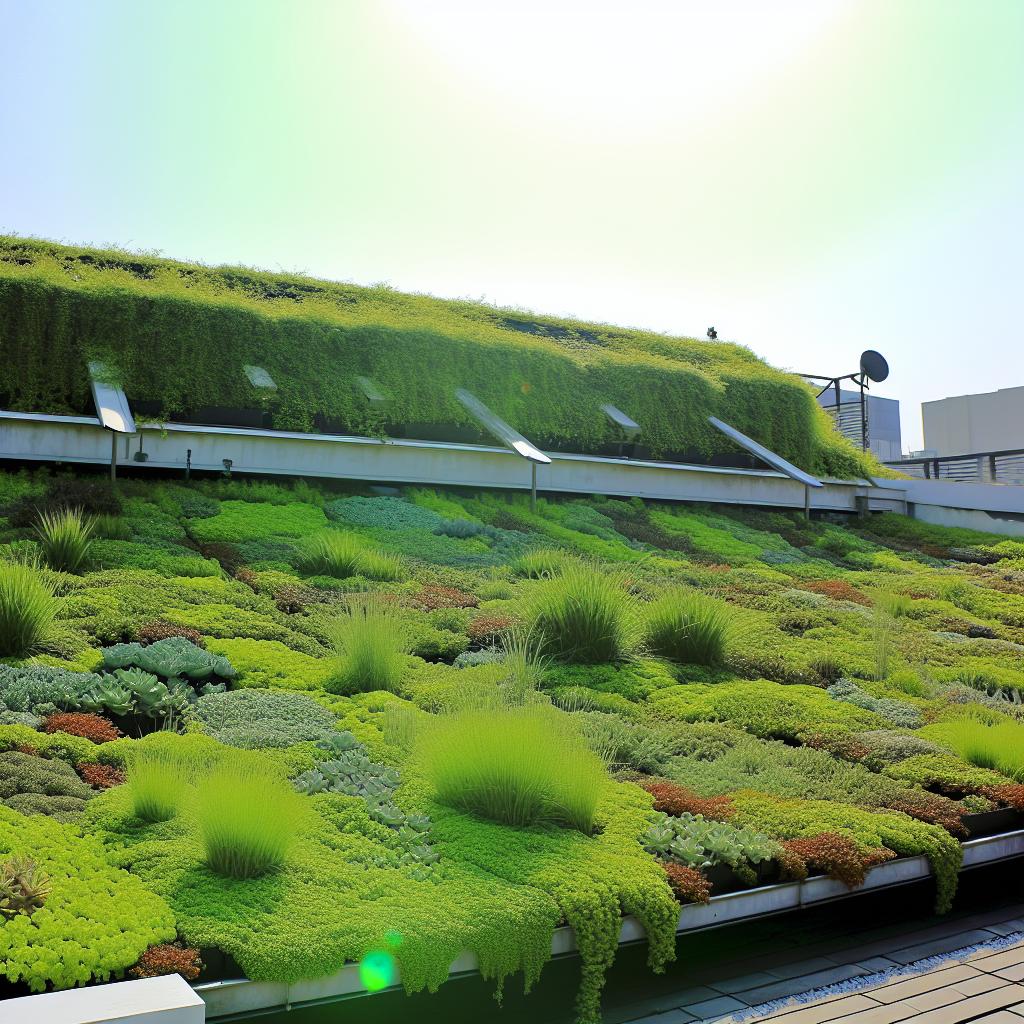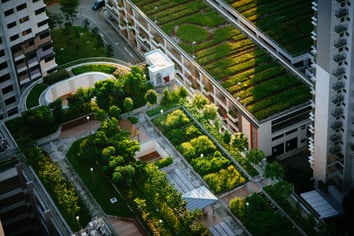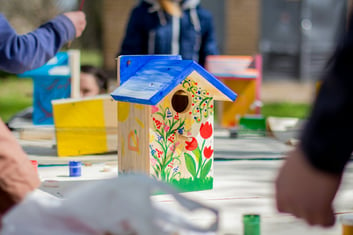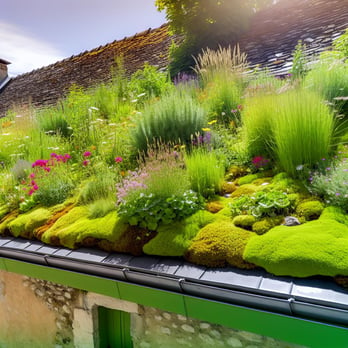The Surprising Role of Roofing in Wildlife Conservation Efforts
April , 2024 | 4 min. read
By Kevin Mills

In the hustle and bustle of our daily lives, it's easy to overlook the impact that roofing has on other things besides our homes. I mean, who thinks about this stuff...besides us. Surprisingly, the roofs above our heads play a significant role in supporting local ecosystems and preserving biodiversity. At RoofCrafters, after thirty years in the industry, we believe it's crucial to shed light on this often-overlooked aspect of roofing and its connection to wildlife conservation.
From providing habitats for birds and insects to supporting the growth of vegetation, roofs can serve as essential ecosystems in urban environments. As experts in roofing solutions, we've witnessed firsthand how the design and materials used in roofing can influence the presence of wildlife in residential and commercial areas. By understanding the importance of roofing in wildlife conservation, homeowners and businesses can make informed decisions that promote environmental sustainability.
In this article, we'll explore the surprising ways roofing contributes to wildlife conservation efforts. From green roofing initiatives to bird-friendly design features, we'll delve into the innovative strategies that roofing professionals are implementing to create more eco-friendly habitats for wildlife. Let's jump right in!
Roofing and Wildlife: The Connection
Roofing and wildlife conservation might seem like an unlikely pair, but the truth is that the connection between the two runs deep, intertwining in ways that often go unnoticed. At first glance, a roof may appear as nothing more than a functional structure, shielding us from the elements and providing shelter. However, when we take a closer look, we discover that roofs play a vital role in creating and sustaining habitats for a variety of wildlife species. Now, we know what you're thinking - "I don't want birds in my roof! Won't they destroy it?" Well, we aren't talking every roof, just the ones that invite them.
One of the most significant ways roofing contributes to wildlife conservation is through the concept of green roofs. These innovative roof designs incorporate vegetation and plant life, transforming what would otherwise be barren spaces into thriving ecosystems. Green roofs provide food and shelter for birds, insects, and small mammals, helping to offset the loss of natural habitats due to urbanization. By installing green roofs on homes and commercial buildings, we create vital stepping stones for wildlife in urban environments, facilitating movement and promoting biodiversity!

Roofing materials and design choices also impact wildlife conservation efforts. For example, the installation of bird-friendly features such as birdhouses, nesting platforms, and bird feeders can encourage avian species to take up residence on rooftops. Additionally, the selection of roofing materials that mimic natural habitats, such as cedar shakes or clay tiles, can provide a more hospitable environment for wildlife. By incorporating these elements into roofing projects, homeowners and businesses can actively contribute to wildlife conservation efforts while simultaneously enhancing the aesthetic appeal of their properties.

How Do I Get a Green Roof?
Getting a green roof installed involves several steps, beginning with the assessment of the building's structural capacity and suitability for such an installation. Typically, a structural engineer will evaluate the building to ensure that it can support the additional weight of the green roof system, which includes soil, vegetation, and drainage layers. Once the structural assessment is complete, the design phase begins, where factors such as the type of vegetation, irrigation system, and maintenance plan are determined based on the specific needs and goals of the project.

Keep in mind that local laws and regulations can influence the feasibility of installing green roofs, especially in regions like the Southeast. While there are no blanket laws prohibiting the construction of green roofs, there may be zoning ordinances, building codes, or homeowners' association guidelines that dictate what types of roofing materials and structures are permissible. In some cases, local authorities may offer incentives or rebates to encourage the installation of green roofs as part of sustainability initiatives or urban development projects.
However, challenges may come along due to climatic conditions unique to the Southeast, such as high temperatures, humidity, and our intense sunlight. These environmental factors can impact the viability and performance of green roofs, affecting factors such as plant health, water retention, and energy efficiency. Ever seen your plants droop after a long, hot day? Imagine that (but intensified).
Concerns about increased maintenance requirements, potential water leakage, and the risk of pest infestations may also influence the decision to install green roofs in the region. Despite these challenges, advancements in green roof technology and the growing awareness of environmental benefits may prompt more widespread adoption of green roofs in the Southeast in the future. This means having a green roof IS possible, it just requires research, planning, and collaboration. But the birds will thank you for taking the time to do so!
How are You Contributing to Wildlife Conservation Efforts?
Kind of a loaded question, isn't it? The cool thing is there's a lot you can do, whether you're a homeowner or not. Buy a cute birdhouse - or better yet - paint one with your kids!
The connection between roofing and wildlife conservation highlights the significant role that built environments can play in supporting biodiversity and ecosystem health. By incorporating green roofs and other wildlife-friendly roofing practices, homeowners and property developers can create habitats for various species, promote biodiversity, and contribute to broader conservation efforts.
Have any questions? RoofCrafters is here for you. Drop us a line on our contact page and one of our friendly representatives will get back to you. Remember, you can get a new roof and still contribute to a sustainable future!
My name is Kevin Mills, and I am the lead estimator for RoofCrafters’ Tampa division. I’m originally from Michigan, and I enjoy hunting, fishing, and spending any free time outdoors. What I’m most passionate about, though, is helping business owners and homeowners alike achieve their roofing goals, all while providing a seamless customer journey.




